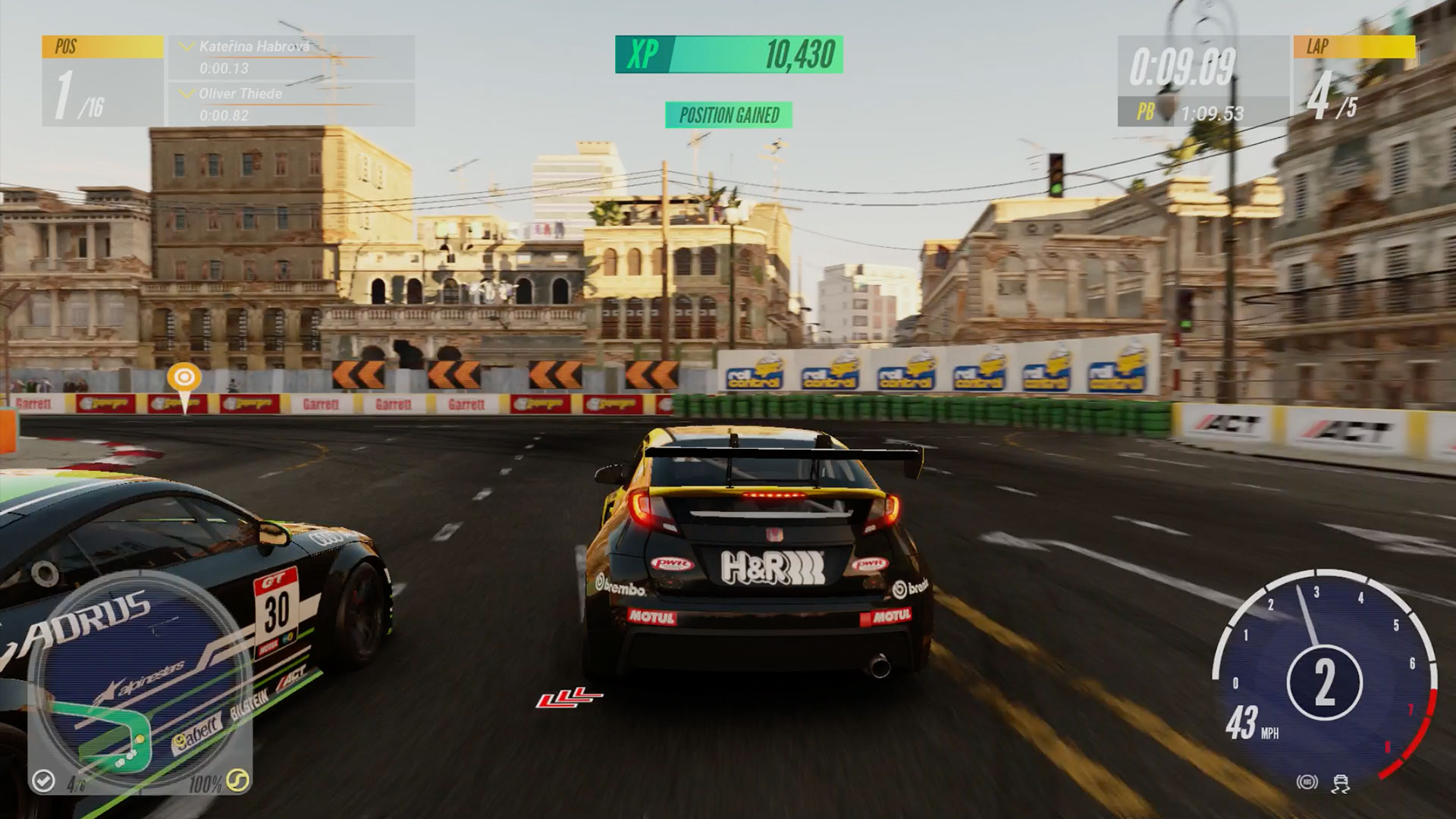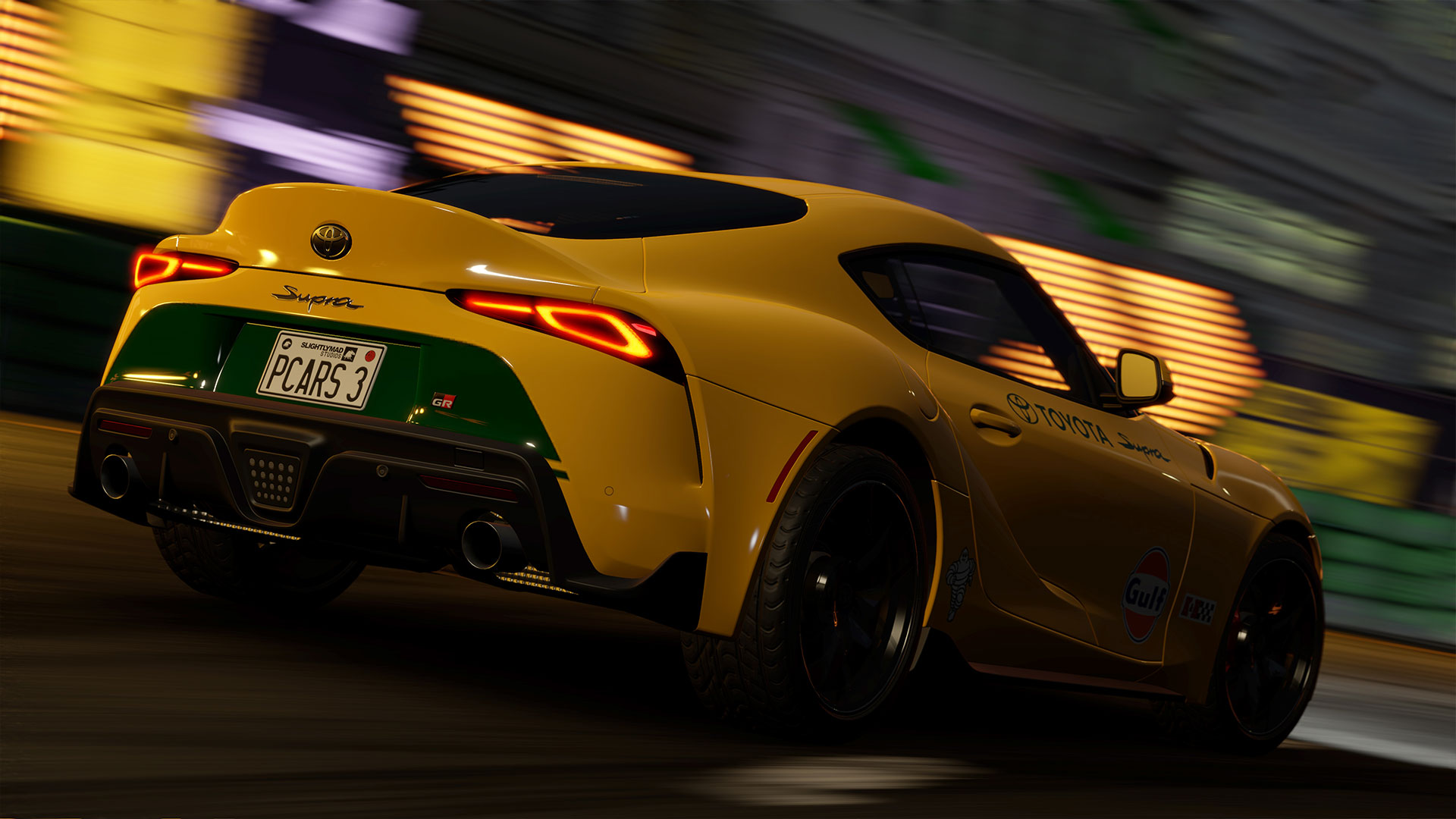Project Cars 3 preview: At last a driving sim that's properly playable with a gamepad
Project Cars 3 is proving racing sims can be accessible

Everyone’s favourite Community Assisted Racing Simulator returns for a second sequel in the form of Project Cars 3, and we’ve been given days’ worth of unmonitored access to an unfinished but impressively full-featured version of the game on PC to poke about with. But what is immediately apparent is how much its ethos has changed since that track day feel of the first game. This feels much more like a simcade racer, and the most game-like Project Cars yet. Not quite what you expected or wanted to hear? Well, don’t worry, it’s still got the realism if you demand it, but now it’s more accessible than ever...
The best news is just how well it handles now with a pad. Traditional control has been completely revamped and the result is a racer that feels like games used to feel some 15 years ago. Intelligent limitation of steering lock according to your speed has been beautifully implemented, which means you’re far less likely to twitch yourself into facing the wrong way, while somehow still managing supreme response time when you need it. Even the advanced levels with only modest ABS and TCS are controllable making for a supremely playable game. As a result, the game might just be the gentlest way to get into sim racing. Screw up your braking and it’s still possible to slew off the road in a realistic spin, but it’s undoubtedly far less frustrating than before.
By comparison, control with a wheel (I used the superb Fanatec CSL Elite PS4 setup) is back to the Project Cars of old, with highly realistic weight distribution that can easily end with an excursion into the agricultural business. Dial the handling difficulty up to professional and it’s a real handful, yet demonstrably smoother and therefore usually faster than the same car and track with a pad.
Eyes on the prize

The career mode has been revamped to feel a lot more like a modern racing game too, offering a focused and modern route through the 200+ cars’ respective categories based on the familiar ‘tier’ structure. You start at the bottom, complete themed events with an eligible car, and then fulfil set criteria in order to unlock the championship at the end of the tier. Complete this adequately and you’re onto the next. Cars can now be properly ‘owned’, too, and there’s even the new ability to modify your car, as well as customise its appearance, which will undoubtedly improve your emotional connection to the game once you finally get your hands on your virtual pride and joy.
The idea of fulfilling criteria as you race rather than just accruing enough points to win a series makes for a more interesting and involved gameplay experience, but one that smacks of simcade rather than full, hardcore simulation. It’s still a realistic racer in most respects, but with added game-y elements, plays a lot more like the excellent Forza Motorsport 7.

This extends to the visuals, too, with icons floating over the track giving you markers for braking points and corner apexes. This gives you a good idea of how to drive unfamiliar tracks without having to fill the screen with an unsightly dynamic racing line, and it also means you can visibly gauge how close you are to mastering each corner through seeing whether you passed through each marker or not. In a move reminiscent of the series’ Need For Speed Shift roots, every single corner can be mastered, which unlocks further achievements and is also sometimes used as criteria for event progression.
Crash banged in boot

The crash damage is nowhere near as catastrophic (at least in this unfinished build) as it was in the first game. Rubbing wheels in open-wheeled single seaters no longer dispatches you onto your roll bar in a cascade of debris; instead it’s now very ‘new GRID’ in its philosophy. Lots of rubbing and denting but very little actual destruction. It’s still possible to crash heavily and see a reasonable degree of deformation and detached bodywork, but it isn’t exactly realistic given the severity of the impact. Hopefully that will change by release.
Weekly digests, tales from the communities you love, and more
The game is playing well, but still needs tweaking in a few areas - most notably the visuals. Metal bodywork looks more like plastic on many of the cars, and buildings look flat and poorly lit, even in the night races in the newly-added Shanghai streets which should really look amazing given the potential and modern graphics technology. The roads of Tuscany look nice, but again the middle-to-far distance scenery isn’t best-in-class by any means. These screens and the video clips in our preview were taken from a PC running the game on ultra settings for the graphics and effects, with only supersampling dialed low or off to maintain the smooth frame-rate in busy scenes. The game does feel impressively optimised already, however, with silky smooth action and even a 144hz mode available on the PC build, and it does look nice if not exceptional on a decent monitor.

That said, in helmet cam with the ‘look to apex’ feature enabled, it still looks and moves very nicely, giving the otherwise slightly sterile visuals a much more organic slant. Just with the previous two games, some racing styles and tracks look and feel better than others, and when you find one you like, like hammering a McLaren around Silverstone or driving a single setare around the newly added Interlagos track, home of the Brazilian Grand Prix, it’s loads of fun and has that one-more-go factor in spades as you strive to hit the equivalent of gold awards in career mode. Whether it’s going to keep up with next-gen Gran Turismo and Forza Motorsport is certainly a question mark, but judged on its own merits, this is a vast and detailed racer that’s more playable than ever before, and looking like being an easy recommendation if you want to join in the sim racing craze.
Project Cars 3 is out on August 28 on PS4, Xbox One and PC, so look out for the review soon.
Justin was a GamesRadar staffer for 10 years but is now a freelancer, musician and videographer. He's big on retro, Sega and racing games (especially retro Sega racing games) and currently also writes for Play Magazine, Traxion.gg, PC Gamer and TopTenReviews, as well as running his own YouTube channel. Having learned to love all platforms equally after Sega left the hardware industry (sniff), his favourite games include Christmas NiGHTS into Dreams, Zelda BotW, Sea of Thieves, Sega Rally Championship and Treasure Island Dizzy.



